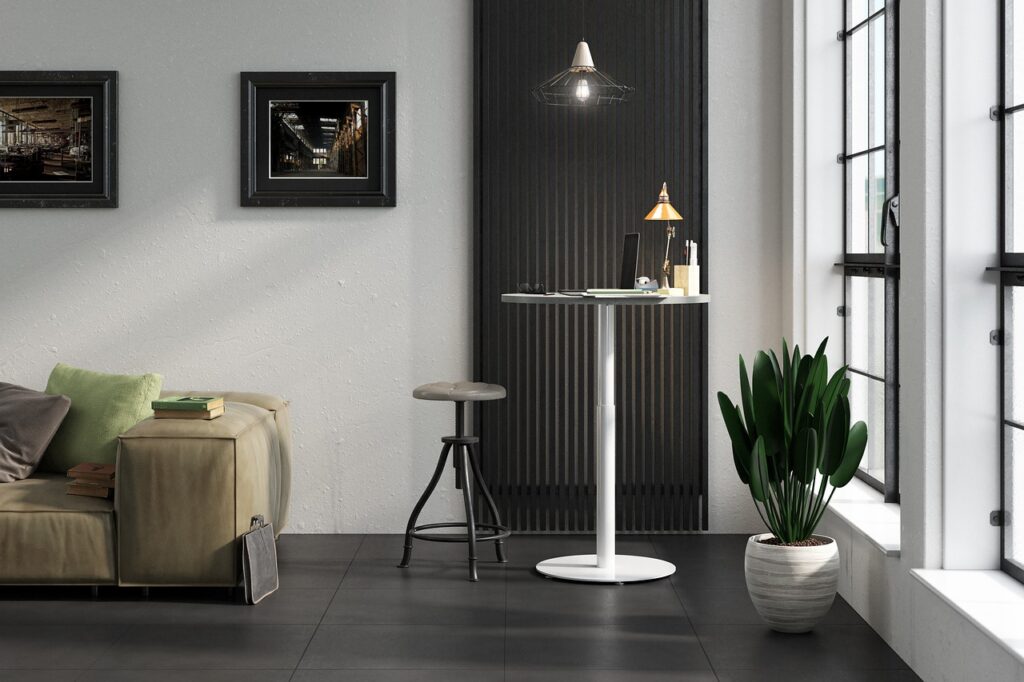Office interior design is more than just aesthetics; it plays a pivotal role in shaping the overall work environment and influencing employee productivity. A well-designed workspace can significantly impact employee morale, well-being, and performance. In this article, we will delve into the various ways in which office interior design affects employee productivity and why partnering with a commercial interior design company is crucial for creating an optimal work environment.
The Role of Office Layout
The layout of an office space is one of the fundamental aspects of interior design that can greatly influence employee productivity. A well-planned office layout can optimize workflow, promote collaboration, and create a sense of community among employees. By considering factors such as efficient space utilization, proper placement of workstations, and the inclusion of collaborative areas, a commercial interior design company can create an environment that enhances productivity.
A well-designed office layout takes into account the specific needs of the organization and its employees. It considers the flow of work, minimizing unnecessary movements and distractions. By strategically placing workstations and common areas, employees can easily interact and collaborate, leading to improved communication and problem-solving.
Lighting and Productivity
Proper lighting is essential for maintaining a productive and healthy work environment. Natural light is known to improve mood, increase energy levels, and enhance focus. Commercial interior design companies prioritize the integration of natural light sources and the strategic placement of artificial lighting to ensure optimal illumination throughout the office. By optimizing lighting conditions, employee well-being and productivity can be significantly improved.
Insufficient or harsh lighting can cause eye strain, fatigue, and headaches, which negatively affect employee productivity. On the other hand, well-designed lighting that mimics natural light can create a positive atmosphere and enhance alertness. Commercial interior design companies employ lighting strategies such as maximizing window exposure, utilizing task lighting for specific work areas, and implementing dimmers or adjustable lighting to accommodate individual preferences.
Ergonomics and Comfort
Employee comfort is a crucial aspect of office interior design. Ergonomically designed workstations and furniture can reduce physical strain, minimize fatigue, and prevent work-related injuries. A commercial interior design company can provide customized solutions that prioritize ergonomic principles, such as adjustable chairs, height-adjustable desks, and proper keyboard and monitor placement. By creating a comfortable and healthy workspace, employees are more likely to be productive and motivated.
An ergonomic office design takes into account the human body’s natural posture and movements, ensuring that employees can work comfortably for extended periods. By providing ergonomic furniture and equipment, companies can reduce the risk of musculoskeletal disorders and increase employee satisfaction. Moreover, a comfortable workspace promotes better focus and concentration, enabling employees to perform their tasks more efficiently.
Color Psychology
Colors have a profound impact on human emotions and can influence mood, focus, and creativity. Strategic use of colors in office interior design can create an atmosphere that stimulates productivity. For example, blue is known to promote calmness and concentration, while yellow can enhance creativity and optimism. A commercial interior design company understands the psychological effects of color and can create a harmonious color palette that aligns with the company’s values and objectives.
Color psychology plays a vital role in setting the tone and ambiance of the office environment. Warm colors, such as orange or red, can stimulate energy and enthusiasm, making them suitable for spaces where employees need to be alert and engaged. Cooler tones like green or blue are often used in areas where focus and tranquility are essential, such as meeting rooms or quiet work areas. By selecting the right colors for different spaces within the office, a commercial interior design company can create an environment that promotes the desired emotional state and supports employee productivity.
Read: Commercial interior design trends in 2023
Noise Reduction and Acoustics
Noise is a common distraction in open office environments and can significantly hamper productivity. Office interior design should include measures to minimize noise pollution, such as sound-absorbing materials, carpeting, and the strategic placement of meeting rooms and communal areas. A commercial interior design company can assess the office’s acoustics and recommend appropriate solutions to create a quieter and more focused work environment.
Excessive noise levels can disrupt concentration, increase stress levels, and decrease productivity. By implementing acoustic solutions, such as soundproofing panels, acoustic ceiling tiles, and sound-absorbing furniture, commercial interior design companies can mitigate noise-related issues. Additionally, design techniques like incorporating greenery or installing white noise machines can help mask distracting sounds, creating a more conducive work environment.
Creating Collaborative Spaces
Collaboration and teamwork are crucial for innovation and productivity in the modern workplace. Office interior design can facilitate collaboration by incorporating dedicated collaborative spaces, such as conference rooms, brainstorming areas, and comfortable breakout zones. These spaces foster communication, idea sharing, and teamwork, ultimately enhancing employee productivity and satisfaction.
Collaborative spaces should be designed to promote creativity, interaction, and the free exchange of ideas. A commercial interior design company can create flexible and inviting spaces that encourage spontaneous collaboration and enable teams to work together effectively. By providing well-designed collaborative areas, companies can nurture a culture of teamwork and innovation, leading to improved productivity and overall success.
Conclusion
Office interior design significantly impacts employee productivity by optimizing the work environment, promoting well-being, and enhancing morale. Collaborating with a commercial interior design company ensures that the workspace is thoughtfully designed, considering factors such as office layout, lighting, ergonomics, color psychology, noise reduction, and collaborative spaces. By creating an environment that supports employees’ physical and psychological needs, businesses can unlock their full potential and achieve greater levels of productivity and success.





